6.4 CONCEPTUAL ART
Conceptual Art honors the artist’s concept, the creative thought. The imagining and creation of the work of art is more important than either the process or the end result. Tied to this was process art which stressed the act of creation over the eventual end result. The aim was to eliminate the isolated art object or product and to arrange environments composed of objects AND audiences. In this art, light, sound, color and devices made of industrial technology saturate the audience with varying sensory experiences. Not since the Renaissance and the loosening of the tight controls of the guild was innovation so great. It used to be that there was painting, and there was sculpture, and some artists did both. Now the artist has access to many other media and there are no schools or academies or guilds to set the rules or assign limits. Artists stepped outside the boundaries of traditional artistic methods and media and sought new ideas.
Marcel Duchamp made inroads into Conceptual Art with his readymade artworks such as Fountain in 1917 and L.H.O.O.Q. in 1919. The Fountain was made with a urinal and L.H.O.O.Q. was an inexpensive postcard with a picture of the Mona Lisa, a readymade, on which Duchamp drew a beard and a mustache. This type of art does not require the artist to go to school to learn how to make art and and the artist could even get away with not making anything at all. Just as Duchamp acquired a urinal and a postcard, other artists concluded that they could use “any material: text, photography, found objects, and even the physical space of the gallery, as long as there was a conceptual dimension that emphasized a set of principles or process involved in producing a given artwork, rather than a finished product.”1
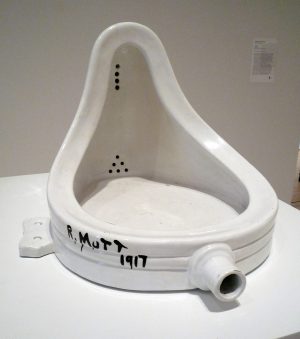
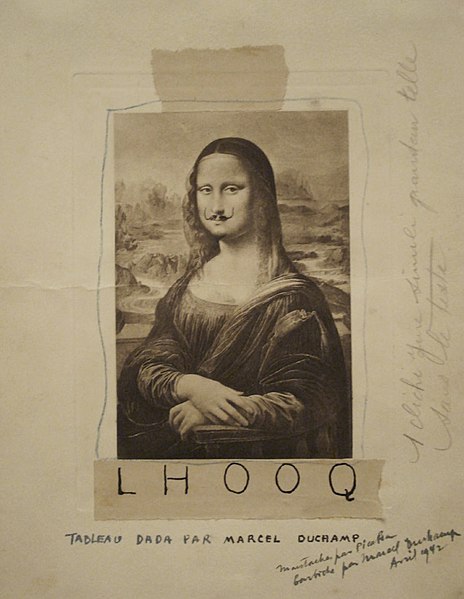

In 1972 Tom Marioni was given a small budget by the De Saisset Gallery in Santa Clara, California. He used the money to buy a car, which he drove up the steps of the museum, parked on an antique rug in the gallery, and called it his exhibit. He sat in the car and talked to museum patrons while he drank champagne and listened to the car radio. The museum thought he was joking and closed the exhibit after a few days.4 This is an excellent example of conceptual art.
Conceptual and Performance Art 5:49
If you receive an error with the link above, use the following link https://www.khanacademy.org/humanities/art-1010/conceptual-and-performance-art/performanceart/v/ukeles-washingtracksmaintenance
Performance Art 9:10
If you receive an error with the link above, use the following link https://www.khanacademy.org/humanities/art-1010/conceptual-and-performance-art/performanceart/v/the-case-for-performance-art
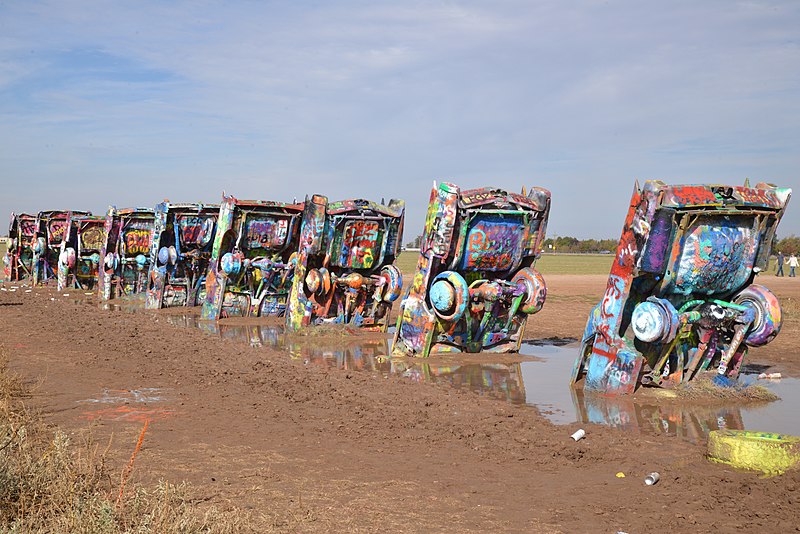
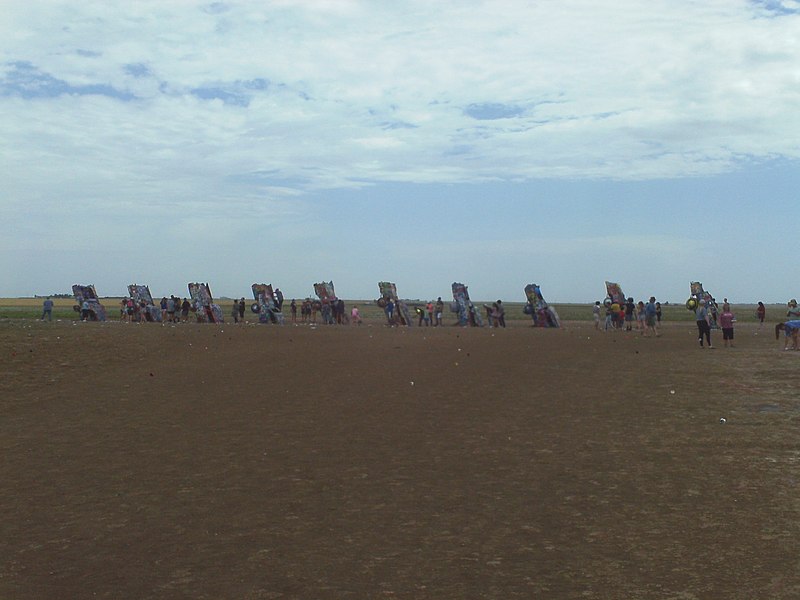
Joseph Kosuth
Joseph Kosuth (1945-) is an American artist, born in Ohio. Kosuth’s most important work was One and Three Chairs, which many consider to be the inspiriation for the Conceptual Art movement. His work is a chair, a picture of a chair, and a dictionary definition of a chair. The idea is that the concept of a chair remains the same even when the basic elements of it differ. The viewer may be thinking, which one of these is really a chair. Kosuth highlights the relationship between the tangible chair, and other ideas of what makes a chair a chair.

Kosuth wants to compare the difference between the concept of chair and the actual presentation of a chair. His worked changed the way people thought of the art they made.
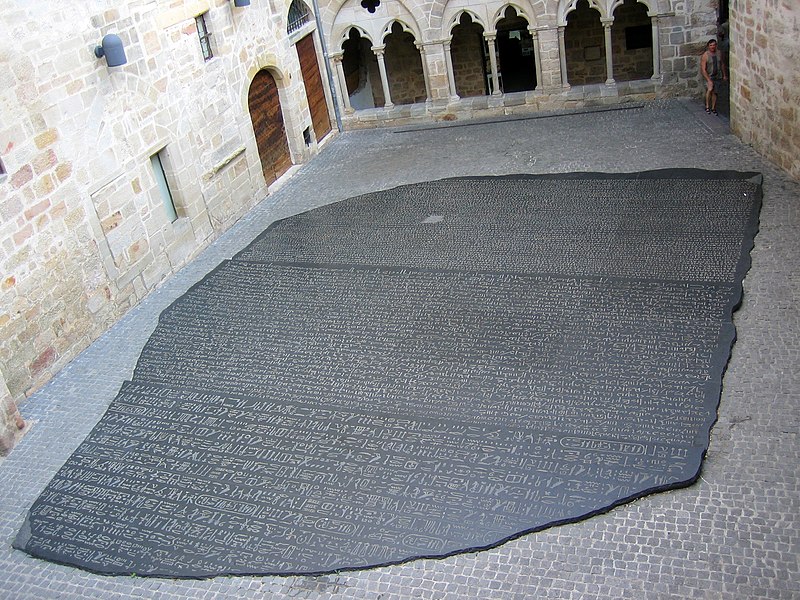
Joseph Kosuth also created a “place of the scriptures” in Figueac, France, the birthplace of Jean-Francois Champollion, who deciphered the Rosetta Stone in 1824. This work is conceptualist art because Kosuth was examining and honoring the relationship between language and words. The Rosetta Stone and Champollion’s deciphering of it, unlocked ancient hieroglyphics and allowed us to read and understand ancient Egyptian language. Champollion was able to decipher it because it was written in three different scripts: hieroglyphs, the traditional script of sacred and official Egyptian text, demotic, which was a used for everyday record keeping, and Greek, which was spoken by the Ptolemaic pharaohs who ruled Egypt at the time. All three inscriptions said the same thing, which enabled Champollion to use his knowledge of Greek to compare the phrases and names. This gave him a place to start translating, and eventually allowed him to understand Egyptian. Kosuth’s giant Rosetta Stone was his way to explore the development of language and how it interacted with and influenced art.
Eleanor Antin
Eleanor Antin (1935-) is best known for her 100 Boots Project. “Conceptual art was opening up the possibility to cross mediums, cross genres, cross boundaries all over the place, to do something intelligent and fun, amusing, startling,” Antin recalls. In 1971 Antin devised 100 Boots, a visual epic narrative created because she wanted an art work that lasted longer than the usual few weeks on exhibit in a New York gallery. She created a “mailwork,” using a mock picaresque novel in serial form (like Charles Dickens), which required a “hero,” who turned out to be one hundred black rubber gum boots, whom Antin refers to as “him” and “his” adventures. The 100 Boots were photographed by Philip Steinmetz as they traveled from California to New York, where their journey was presented in the summer of 1973 at the Museum of Modern Art as an exhibition of fifty-one black-and-white postcards mailed to one thousand art critics and other recipients around the world. Antin’s strikingly original concept completely bypassed the traditional gallery system of art distribution by using the postal system as a means of distribution. She was the first Conceptual artist to combine serial imagery and a fictional narrative content within a long-term art event spanning two and a half years.
Eva Hesse
Eva Hesse (1936- 1970), was born into a Jewish family in Germany. She was sent to Amsterdam with her sister while her parents remained in Germany. Eventually she and her parents were reunited and traveled to New York. In 1946, Eva’s mother committed suicide when she learned that her family had been murdered by the Nazis. Eva used handmade, twentieth century materials like fiberglass. She died in 1970 of a brain tumor at the very young age of 34.
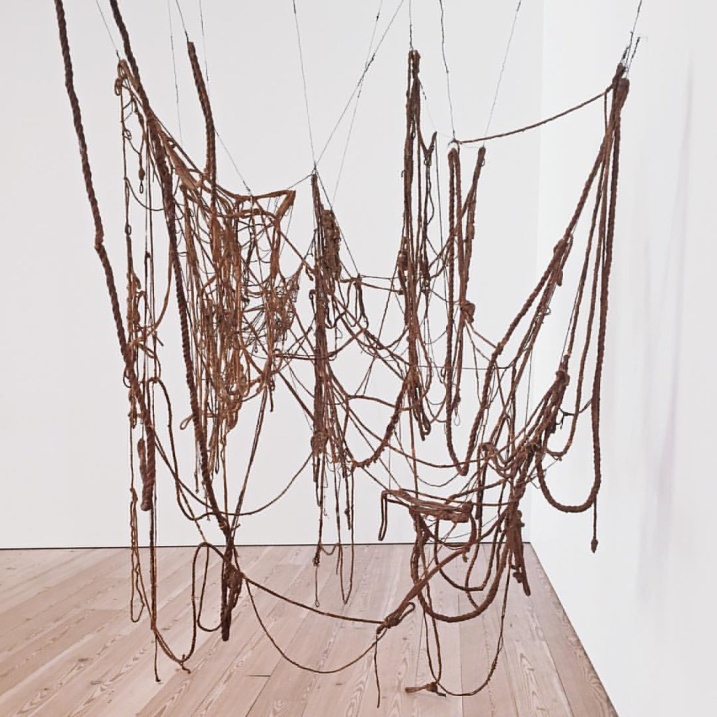
Eva Hesse, Untitled Rope 1966 3:41
If you receive an error with the link above, use the following link https://www.khanacademy.org/humanities/art-1010/post-minimalism/post-minimalism-sculpture/v/hesse-untitled-1966?modal=1
Eva Hesse, Untitled Rope 1970 3:46
If you receive an error with the link above, use the following link https://www.khanacademy.org/humanities/art-1010/post-minimalism/post-minimalism-sculpture/v/hesse-untitled-rope-piece-1970?modal=1
Eva Hesse- Last Work- 1970 5:26
If you receive an error with the link above, use the following link https://www.khanacademy.org/humanities/art-1010/post-minimalism/post-minimalism-sculpture/v/the-last-work-of-eva-hesse?modal=1
Christo Javacheff and Jeanne-Claude
Christo (1935-2020) was born in Gabrovo, Bulgaria during Nazi occupation. He took painting and drawing lessons in his youth, and defected to Prague, then Vienna, and then Paris, which is where he met and married Jeanne-Claude (1935-2009) who was from Casablanca, Morocco. The couple worked together on their large, outdoor installations. Their earliest works were identified as having been made by Christo, ostensibly because the art world would not have accepted works made by a woman. However, later in their career Christo and Jeanne-Claude retroactively identified the earlier large works as having been made by both of them. Much of their work revolves around wrapping or covering objects, large and small, to force the viewer to re-think or re-imagine the object and its space. His first works were furniture, oil drums, bottles and cans wrapped in canvas and twine. But many of his later works showed Christo’s interest in the natural environment which he used as his medium.
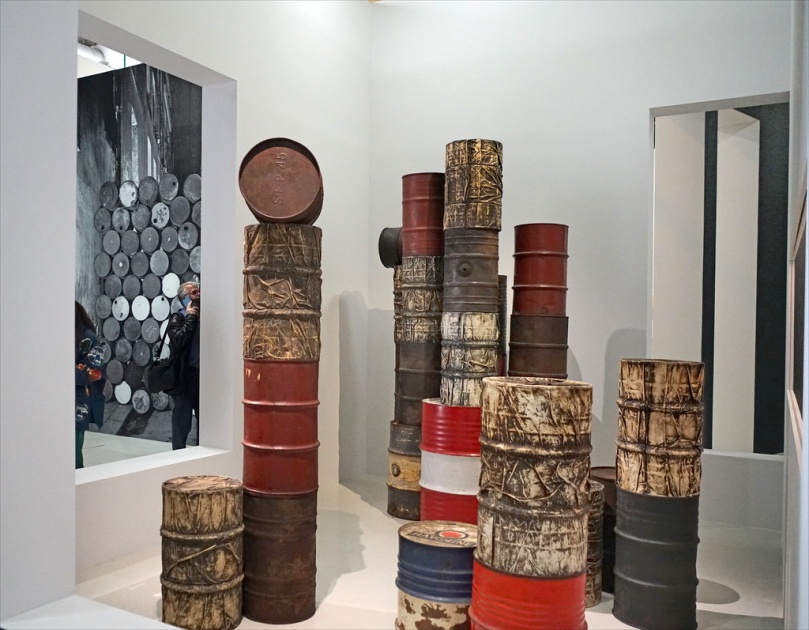

The idea to wrap the Arc de Triumph began in 1961, just after Christo and Jeanne-Claude met in Paris. They rented a small apartment near the arch and in 1962 he made a photomontage of what it would look like wrapped. In 2021, sixty years later, and after both of the artists were dead, the project was realized. It was wrapped from September 18th to October 3, 2021 in 25,000 square meters of recyclable silver blue polypropylene fabric and bound with red cord. The project was paid for by the sale of preparatory studies taken from his estate as were most of his large outdoor works.
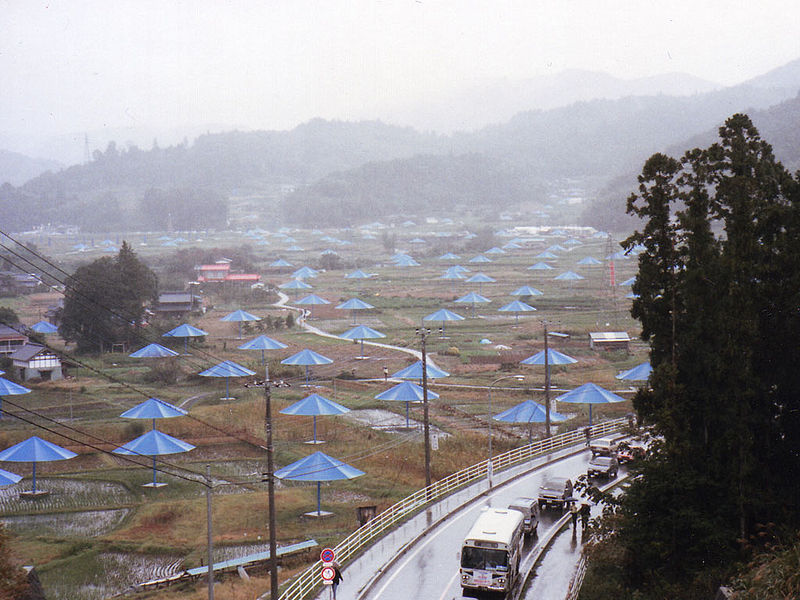
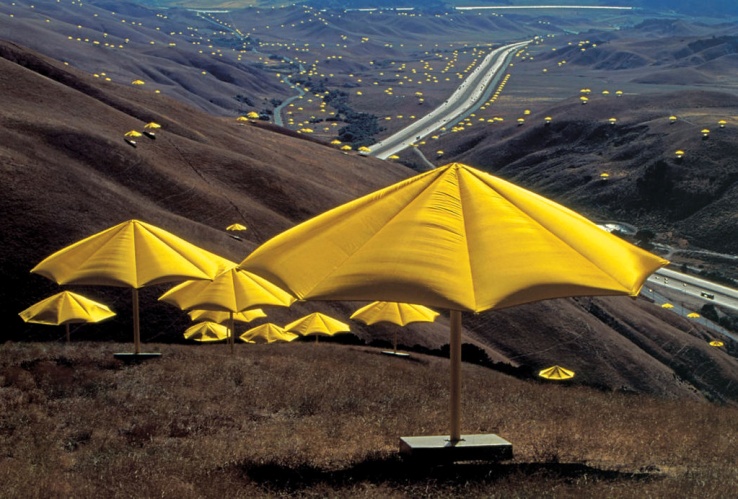
The Umbrellas was another important project built by Christo and Jeanne-Claude.
“Thousands of umbrellas, 18 feet high and 24 feet in diameter will meander in the landscape for several miles, simultaneously in Japan and the western part of the United States, as a two-site project. The octagonal umbrellas will run alongside roads and riverbeds, crossing rural areas, fields, and intersections in suburban areas in both countries. Sometimes in clusters, then in a line or spaced from each other, The Umbrellas occasionally will slightly tilt according to the slope of the terrain on which they rest. As I have done for all my other temporary works of art, The Umbrellas shall be entirely financed by me through the sale of my preparatory drawings, studies, and early works. For a period of two weeks The Umbrellas will be seen, approached, and enjoyed either by car from a distance and closer as they border the road, or in a promenade route under The Umbrellas in their luminous shadows.”14

The concept for Valley Curtain began in 1971 but it was not put in place until 1972. The temporary workers hung more than 200,000 square feet of woven nylon fabric over highway 325 near Rifle, Colorado. It was 1250 feet wide and from 365 feet to 182 feet high. Their permit allowed them to keep it in place for a month, but it was destroyed by sixty mile an hour winds 28 hours after installation. As was the case for most of their work, the project was financed by selling preparatory sketches and drawings of the proposed work.
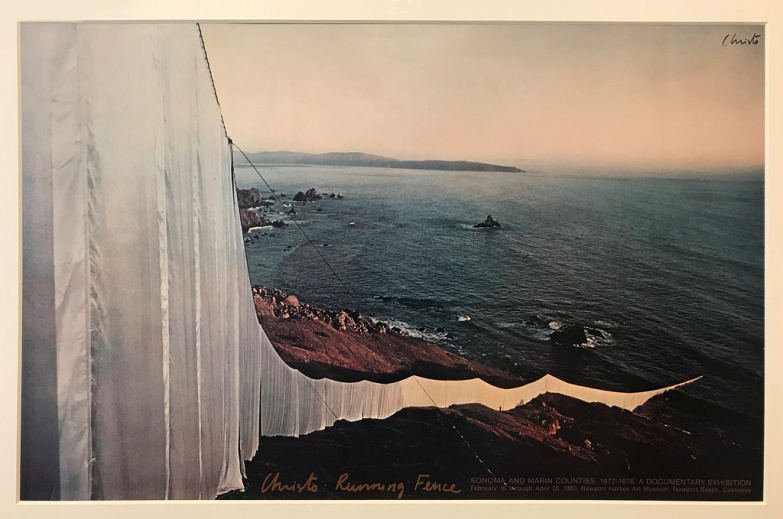
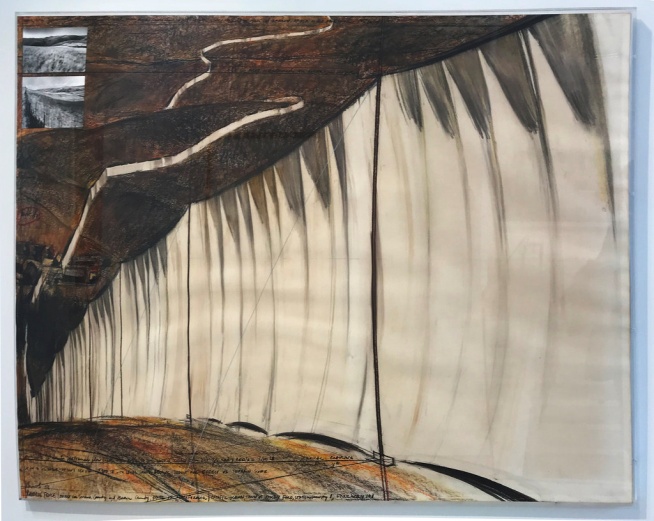
Running Fence was built in 1976 and was the largest work created by an artist up to that time. They used steel posts; nylon sheeting that was 20’ high and 24 miles long. The goal was to find a harmonious relationship between art and nature. His work articulated rather than destroyed the rhythms of the landscape. The movement of the fence up and across the hills and valleys made the shape of the land readable. So many participants, the media, and volunteers, had permits to help, that it became a social activity rather than a work of art. Christo raised two million dollars for the project by selling preliminary drawings. The work became the subject for two movies, three books, a documentary an exhibition, reproductions, and postcards. After two weeks, it was taken down, and pieces of it were sold widely. The artist’s concept and the process of its creation were what made it art because it no longer even exists.
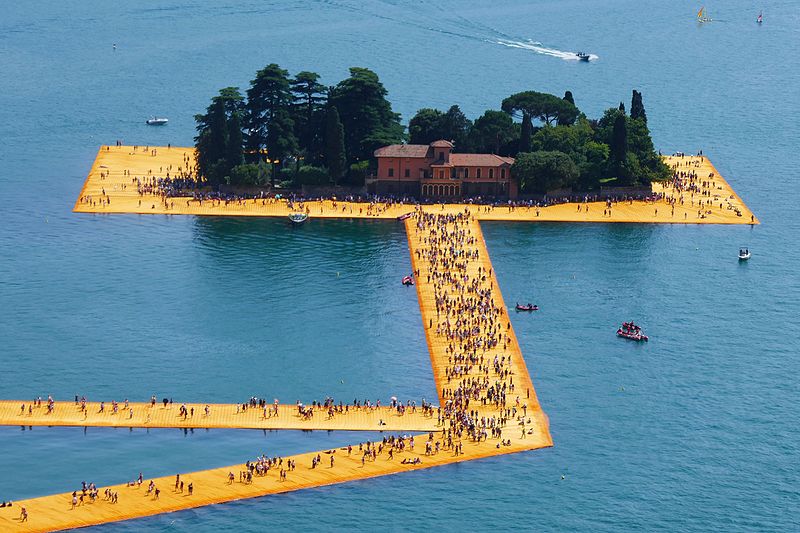
Yayoi Kusama
Yayoi Kusama (1929-) was born in Matsumoto, Japan. She had a difficult childhood and her parents refused to let her study art, insisting that she attend school to learn manners so she could more easily be accepted into a wealthy family in an arranged marriage. She works in sculpture as well as conceptual and installation art. Yayoi was trained at Kyoto City University of Arts and has become a phenomenon in the art world partly because of Instagram and other social media outlets. Kusama contacted Georgia O’Keefe whose work she had seen in a book in her home town in Japan and became determined to fight against two barriers to her acceptance in the art world: she was a woman, and she was Japanese. She spent many years in poverty and was unable to sell her work. She left Japan at a young age and traveled to New York City.
As a child she sat in the garden her parents kept to grow flowers for commercial sale and imagined that the flowers and vegetables talked to her. She then drew images of her encounters with them in her sketch books. Kusama participated in many different kinds of avant-guarde “happenings” while in New York. She painted polka dots on nude museum goers, made soft sculptures which some say were before the soft works of Oldenburg and Warhol, and built infinity rooms made of mirrors to reflect space repeatedly. Kusama’s family in Japan was still very traditional, and the lifestyle and artistic style she led in the United States was not well received back home. Eventually she returned to Japan and checked herself into a mental institution. She still lives there today. She works in her studio across the street all day, and then returns to the hospital every night.

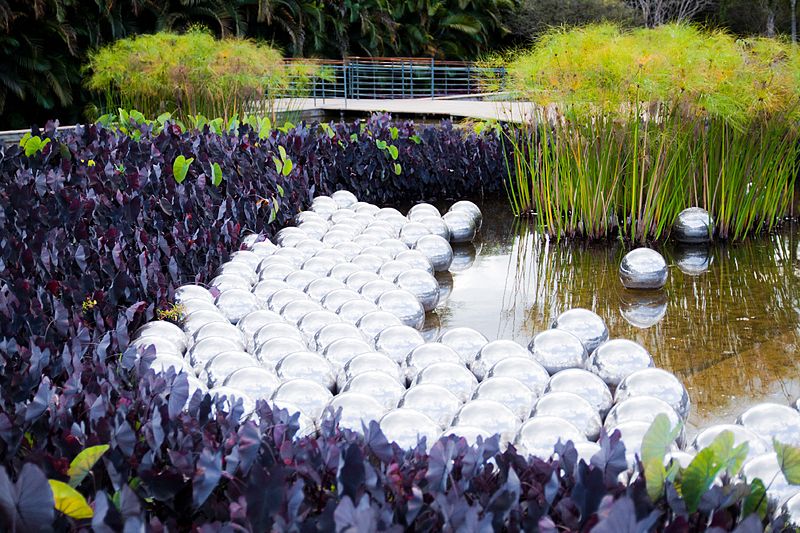
The Narcissus Garden was created by Kusama in 1966 for the 33rd Venice Biennial. It was installed on the lawn and included 1500 reflective balls which allowed participants to see their reflection multiple times. The authorities did not like that Kusama was selling the balls from her art work for $2 each, like they were treats at an amusement park, so they closed her exhibit. A new version of the work has been created and exhibited around the world in several museums.

Yayoi Kusama- Conceptual art 7:24, Yayoi Kusama-Pumpkin 5:30
If you receive an error with the links above, use the following links https://www.khanacademy.org/humanities/art-1010/conceptual-and-performance-art/conceptual-performance/v/yayoi-kusama, https://www.khanacademy.org/humanities/art-1010/conceptual-and-performance-art/conceptual-performance/v/yayoi-kusama-pumpkin
Robert Smithson
Robert Smithson (1938-1973) was born in New Jersey and was interested in travel, map making, geology, natural history, and land reclamation. As he matured he began to think of art as being connected to a place rather than art that resided in a museum. His work can be separated into two types: non-site works and site works. The non-site works are suitable to be shown in museums. These might include a photograph of the site, with a map, rocks, mud, and sand from the site, and then might also include mirrors and other constructions. A site work is something that is built for a specific site, such as the Spiral Jetty as seen below. Some call this type of art an earthwork. Spiral Jetty is a counterclockwise path that is 1500 feet long and 15 feet wide, made of basalt rock and mud. It was built on Rozel Point on the shore of the Great Salt Lake. Over the years the spiral has become encrusted with salt and filled with tiny shrimp that turn the water pink in some seasons of the year.


Broken Circle, another site work, was commissioned and built in a reclaimed mining operation in Emmen, Holland and is Smithson’s only permanent work outside of the United States. It is another site work, like the Spiral Jetty and was his first land reclamation project. It is a jetty and a canal on the bank of the quarry lake and is made of white and yellow sand. The interior canal is about twelve feet wide and there is a stone-age dolmen in the middle that looks like the center of an eye. It was brought down the slopes into Holland during the Ice Age.
Nancy Holt
Robert Smithson was married to Nancy Holt (1938-2014) and they shared a love of earthworks. Nancy was born in Massachusetts and grew up in New Jersey, but it was the American Southwest that inspired her.
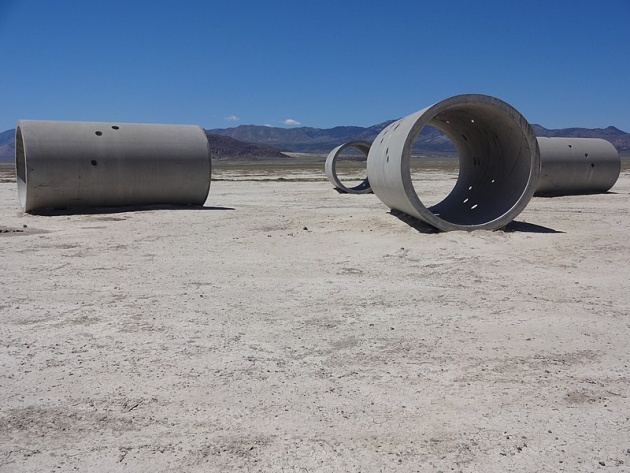

Nancy’s Sun Tunnels are built in a desert valley in northwestern Utah and are visible for great distances. The concrete, steel and earth formation is placed to see the sun rise and set during the summer and winter solstices, so it is site specific. The holes drilled in the concrete create the constellations Draco, Perseus, Columba and Capricorn inside of the tunnels.
Dark Star Park was commissioned for Arlington Virginia and installed in 1984. It consists of five gunite spheres, two pools, four steel poles, a stairway, and a tunnel. Nancy worked with an astrophysicist to calculate the exact time on August 1st 1860 when the town was created. At that moment the elements in her work align exactly with the shadows on the grass. So this work is site specific. In fact, because of a wobble of the earth’s axis, her artwork must be “recalibrated” periodically so it will be exact.
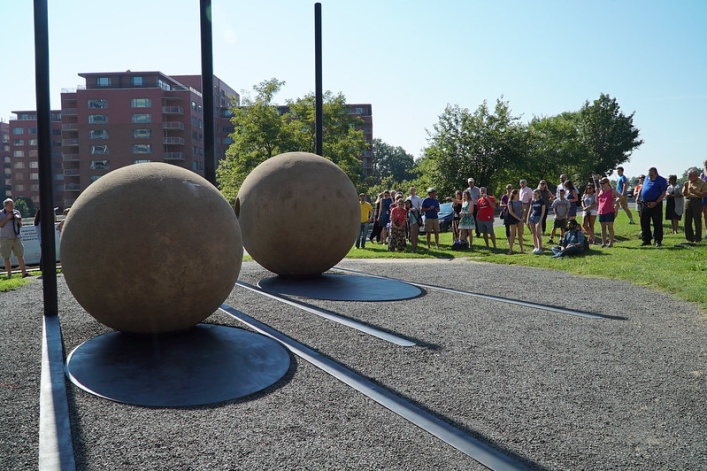
Judy Chicago

Judy Chicago was born Judy Sylvia Cohen in 1939, to a family that had been rabbis for twenty three generations. Her father was a member of the Communist Party and a union organizer, and this made things difficult for their family during the 1950s when McCarthyism was rampant. Judy attended the Art Institute of Chicago and UCLA and has focused on women’s art and the treatment of women by the largely male art world. Chicago has often used her art to call attention to the fact that so called women’s art is often made textile and pottery, and is not recognized as “real” art. Judy’s most important work is the Dinner Party.

“The Dinner Party is a monument to women’s history and accomplishments. It is a massive triangular table—measuring 48 feet on each side—with thirty-nine place settings dedicated to prominent women throughout history and an additional 999 names are inscribed on the table’s glazed porcelain brick base. This tribute to women, which includes individual place settings for such luminary figures as the Primordial Goddess, Ishtar, Hatshepsut, Theodora Artemesia Gentileschi, Sacajawea, Sojourner Truth, Susan B. Anthony, Elizabeth Cady Stanton, Emily Dickinson, Margaret Sanger, and Georgia O’Keeffe, is beautifully crafted. Each place setting has an exquisitely embroidered table runner that includes the name of the woman, utensils, a goblet, and a plate.” 29
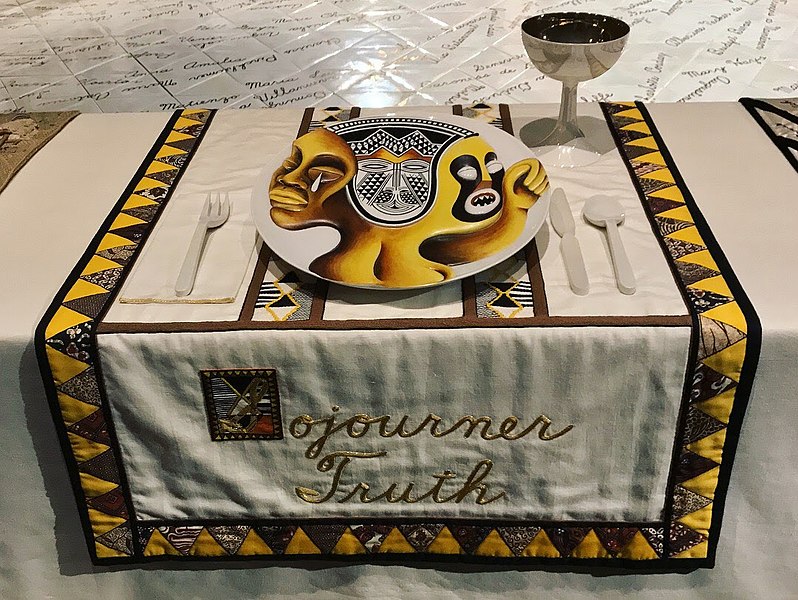
The Dinner Party was created by volunteer labor of more than 400 people and opened at the Museum of Modern Art in San Francisco in 1979. The work was controversial when it went on display because many people thought it resembled female genitals that did not belong on public display. It is now owned permanently by the Elizabeth A. Sackler Center for Feminist Art in the Brooklyn Museum of Art. Chicago has spent much of her life establishing feminist art programs in California and her goal has been to provide opportunities to learn about the history of women by looking at art.

